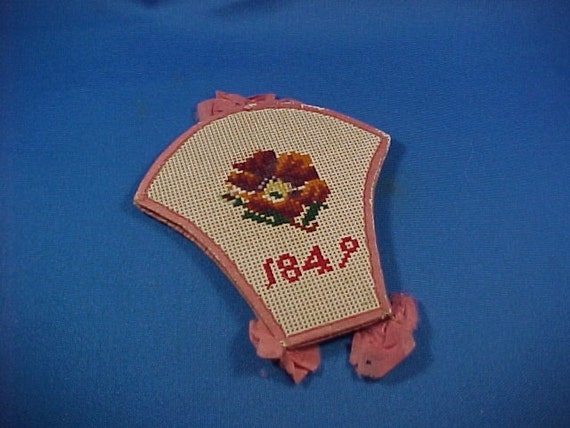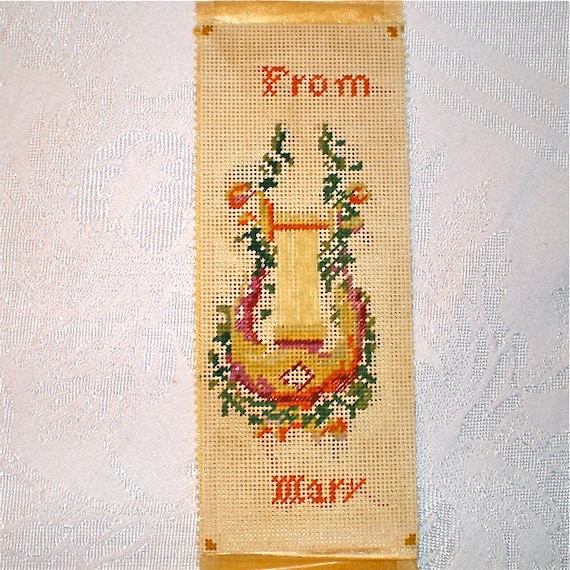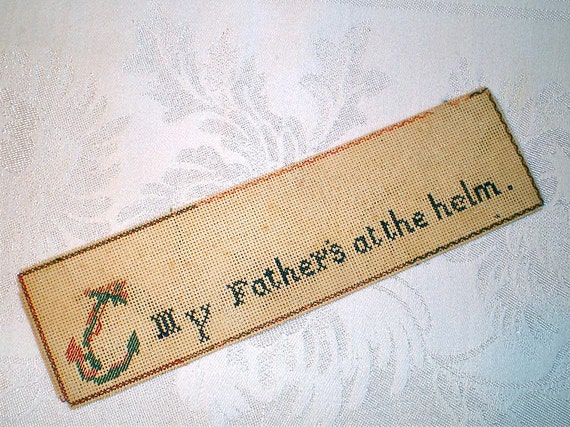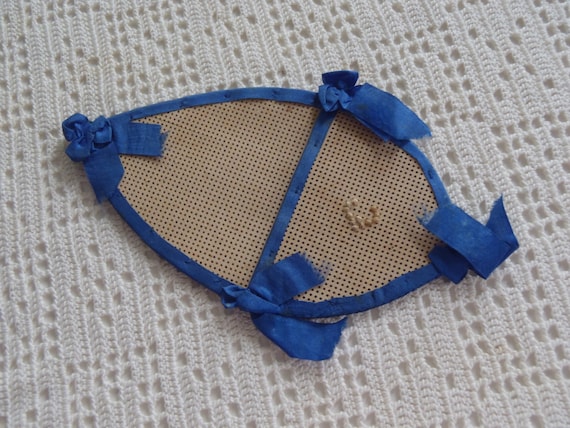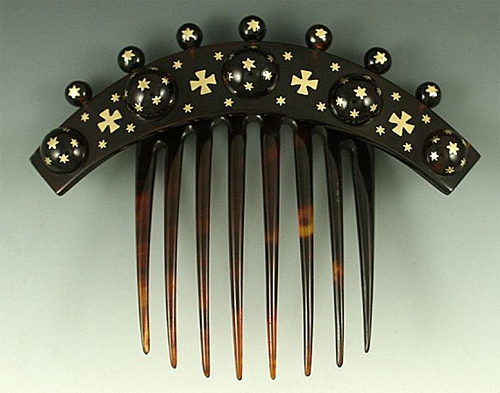Cat hair can lead to moments of self-reflection
I did not originally think of punched paper as an area of research. Periodically Glenna Jo Christen has poked my shoulder, repeating the phrase "punched paper" as I work on my many projects. This has gone on for some months (the shoulder poking), until finally I buckled down to figure out just what she meant.
What I found was astonishing! So many little crafty items, from bible markers to memorial samplers. If you recall, I already treated myself to a fangirl Berlin woolwork post a few months ago. Now I have found a way to apply that research to a medium other than cloth.
Just as with my other topics of research, I attempted to find photographic, textual, and original documentation. In terms of punch paper projects, I could find no photographic evidence such as carte de visites or daguerrotypes. I'm not surprised by this. Such small work would hardly show up. So if anyone finds any, please send it my way! Otherwise, I will continue with the textual and original documentation, which there seems to be in abundance.
History
Textual Documentation
While Claudia's article was perfect for placing punched paper needlework to the Civil War era, I would like to include a bit of my own research from other sources. One can never have too much documentation!
I have found an excellent piece written by Claudia Dutcher that walks the reader through different decades of perforated paper crafts. Please read it here, though I will include a bit of the information in the following paragraphs. Claudia also has a shop, which I highly recommend as well!
Needlework on perforated paper began in the 1840's. With the careful skill and ingenuity of the ladies, these included bookmarks, needlebooks, and even a sewing basket. Over time they became very elaborate! Themes were often religious with memorial motifs or sayings. Animals, flowers, samplers...it was very reminiscent of the Berlin woolwork and cross stitchery of the time. Eventually magazines carried counted patterns for the paper, though many people still completed the project freehand.
Generally the projects are very small with 18-24 holes per inch. Most seem to be completed on white paper, as all but one of Claudia's examples are in that color (the other? Pink!). Bookmarks were often finished with a silk ribbon stitched/pasted to the back. Her article includes many pictures of originals, all from her personal collection. I am humbled by her dedication to the craft, and I strongly encourage you to look at it before continuing on my post!
Contributions to Fancy Fairs, Godey's Lady's Book, August 1855
Book-markers , with mottoes, scriptural or friendly, are always popular and saleable articles. Very pretty perforated cards, with fancy borders, and to be worked in silk or beads, can now be procured anywhere. Berlin patterns of large size, for Church Bibles and Prayer Books, are certainly handsomer in beads than anything, but care must be taken in selecting the shades. Seed beads are proper for this work, and can be procured in as perfect shades as wools, with the additional advantage of never fading, as silks and wools certainly do. To work the design in beads, and ground it in white beads, has the richest possible effect. The back should be lined with sarsnet ribbon, on which an end long enough for the book must also be left.
The American Girl's Book, 1857
Nothing Finished, Godey's Lady's Book, May 1860
I ONCE had the curiosity to look into a little girl's work-box. And what do you suppose I found? Well, in the first place, I found a “bead purse,” about half done; there was, however, no prospect of its ever being finished, for the needles were out, and the silk upon the spools all tangled and drawn into a complete wisp. Laying this aside, I took up a nice piece of perforated paper , upon which was wrought one lid of a Bible, and beneath it the words, “I love,” but what she loved was left for me to conjecture.
Der Bazar 1860
La Mode Illustree, 1861
Prayer-Book Marcher, Godey's Lady's Book, December 1861Lesezeichen, 1862
Der Bazar 1862
Directions for Book-Marker, Godey's Lady's Book, September 1862
TAKE fine perforated card-board, and cut the cross any size you wish, cutting through the holes so as to leave the little scalloped edge. The next layer of paper should be exactly one hole
Bible Markers, Godey's Lady's Book, July 1865
For the long cross, which is composed of 3 separate crosses. Cut out in perforated board the cross, the same size as in engraving. Then 2 others, each a size less. On the smallest work the pearls. Then sew this beaded cross on to the next-sized cross; then on to the largest. Double up the end of the ribbon so as to hide it under the transverse part of the cross. Now sew the latter on to the ribbon. Cut out 3 other crosses. Place one on the other, and sew on to the back.
The mediaeval cross is of one piece of board only. Cut it to the size of the engraving. Pearl it, and sew as directed for the largest cross.
Needless to say (but I'll say it anyway), there are MANY examples of punched paper in periodicals of the time, though they are mostly religious. I must apologize for my lack of German and French! Lesezeichen and signet are now my new favorite words! On a more serious note, if you are adept of either of these languages and find other examples you'd like to see here, please message me.
Surviving Originals
The DAR Museum online offers a beautiful collection of perforated paper crafts dated from the 19th century. You can find them here; do be warned, clicking through the gallery will cause you to suffer from a serious case of I-WANT-IT. And I'm sorry, some of these are for sale too! Here are a few other examples I have found:
As many originals are freehand, it is difficult to date them. A mother's design from 1858 could be redone in a daughter's style in 1874. Women used different colors than the ones they saw in magazines too. My untrained eye can't necessarily pin them to a year; perhaps over time I will gain that skill!
Conclusion
I am certainly not the first to approach this topic. From what I understand, the ladies at the Athenaeum have learned the art of punched paper, as found in this thread on The Sewing Academy. Also, The Civilian Symposium (as The Ladies and Gentlemen conference) has featured Carol Garratano's workshop on the cutting designs of punched paper, but the new site does not feature an archive so I cannot link to the information.
As I was still in the procrastination mood, I decided to give these a try. The first was based on the original from La Mode Illustree, 1861, though I can't find the exact source online for the others (just the charts):
As I was still in the procrastination mood, I decided to give these a try. The first was based on the original from La Mode Illustree, 1861, though I can't find the exact source online for the others (just the charts):
They were incredibly fun to do and easy to transport, as they could lie completely flat to fit in my purse. Since they were not fabric I didn't need an embroidery hoop...much fewer mistakes! You'll notice too that I made adjustments that worked for me, color changes or additions. I can imagine the 19th century woman doing the same. Perhaps she liked green better than pink or maybe the anchor needed a flower next to it. These little differences make each piece so unique!
If you're interested in making your own, I do sell an easier-to-read cross pattern of the cross in my shop here. It's a word document, so you can print it or save it to the computer. Otherwise, bless your eyes! I found the 20 count paper at Tokens and Trifles and used DMC floss and a very small tapestry needle included with the package. My ribbon is 100% silk, lightly pasted to the back.
I'd like to see if you do a project using perforated paper. Please post your link below! I will eventually add these religious lovelies or others to my shop; I want to make a scissors case/needlebook too. Expect future posts about punched paper!
If you're interested in making your own, I do sell an easier-to-read cross pattern of the cross in my shop here. It's a word document, so you can print it or save it to the computer. Otherwise, bless your eyes! I found the 20 count paper at Tokens and Trifles and used DMC floss and a very small tapestry needle included with the package. My ribbon is 100% silk, lightly pasted to the back.
I'd like to see if you do a project using perforated paper. Please post your link below! I will eventually add these religious lovelies or others to my shop; I want to make a scissors case/needlebook too. Expect future posts about punched paper!
~Kristen
Sources
Claudia Dutcher, Perforated Paper Needlework:
DAR Punched Paper Gallery:












